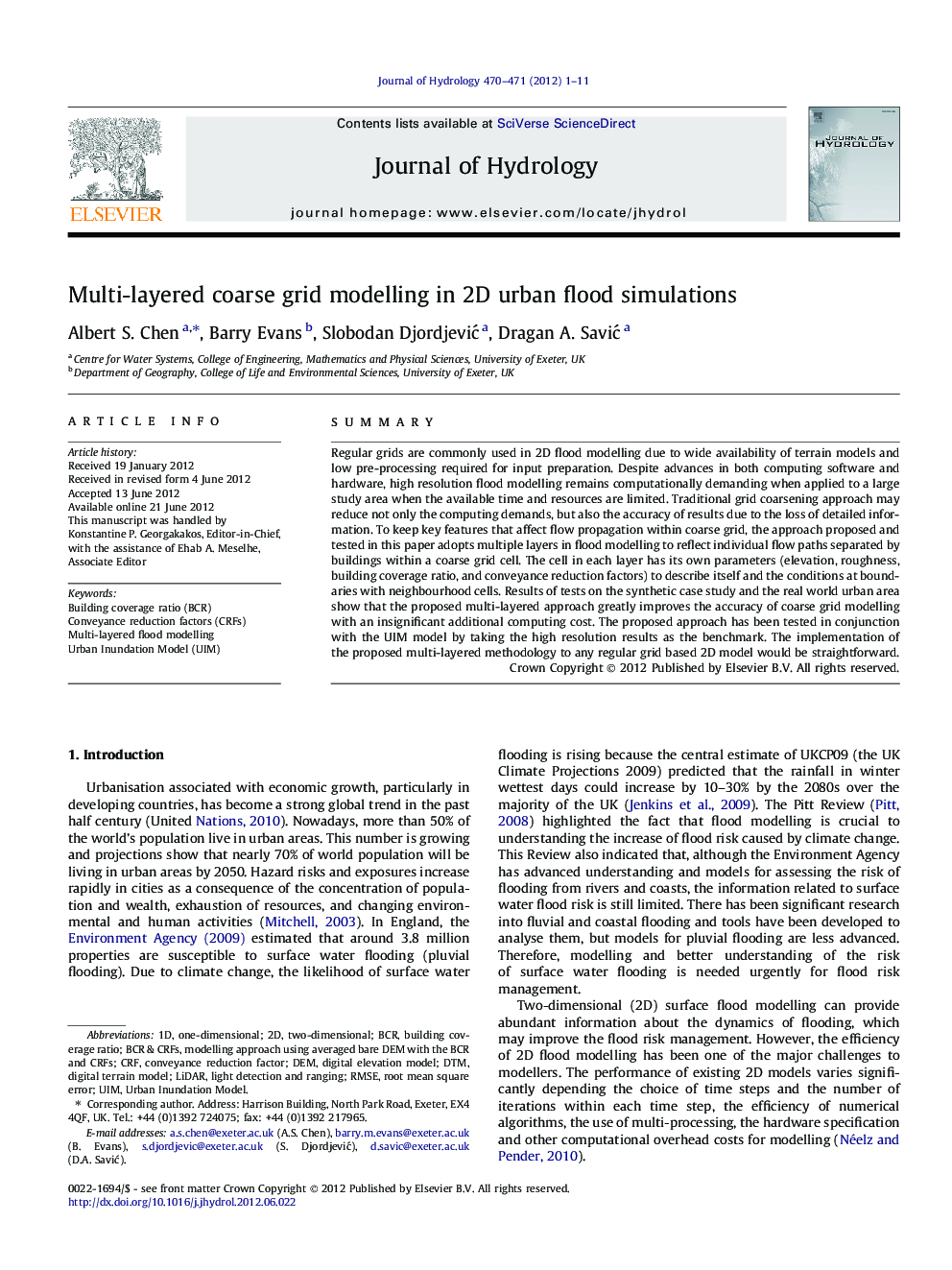| کد مقاله | کد نشریه | سال انتشار | مقاله انگلیسی | نسخه تمام متن |
|---|---|---|---|---|
| 4576699 | 1629976 | 2012 | 11 صفحه PDF | دانلود رایگان |

SummaryRegular grids are commonly used in 2D flood modelling due to wide availability of terrain models and low pre-processing required for input preparation. Despite advances in both computing software and hardware, high resolution flood modelling remains computationally demanding when applied to a large study area when the available time and resources are limited. Traditional grid coarsening approach may reduce not only the computing demands, but also the accuracy of results due to the loss of detailed information. To keep key features that affect flow propagation within coarse grid, the approach proposed and tested in this paper adopts multiple layers in flood modelling to reflect individual flow paths separated by buildings within a coarse grid cell. The cell in each layer has its own parameters (elevation, roughness, building coverage ratio, and conveyance reduction factors) to describe itself and the conditions at boundaries with neighbourhood cells. Results of tests on the synthetic case study and the real world urban area show that the proposed multi-layered approach greatly improves the accuracy of coarse grid modelling with an insignificant additional computing cost. The proposed approach has been tested in conjunction with the UIM model by taking the high resolution results as the benchmark. The implementation of the proposed multi-layered methodology to any regular grid based 2D model would be straightforward.
► Multi layers are used to represent separate parts of a coarse cell bisected by buildings.
► The building coverage ratio (BCR) represents the storage area occupied by buildings.
► The conveyance reduction factor (CRF) reflects the confined flow paths.
► Each layer has its own BCR and CRF parameters to describe building situations.
► The model can improve modelling accuracy with limited extra computational cost.
Journal: Journal of Hydrology - Volumes 470–471, 12 November 2012, Pages 1–11